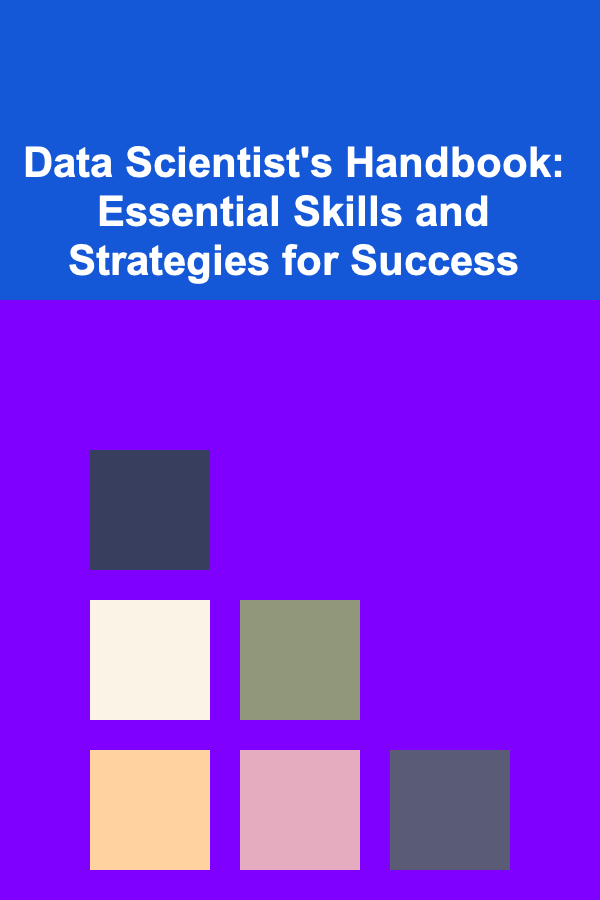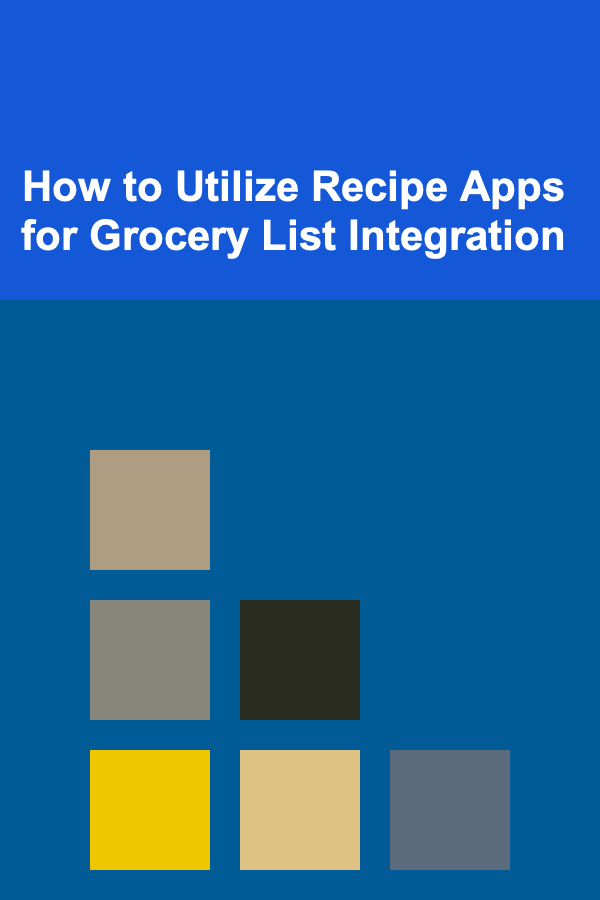
How to Use a Teacher Planner for Curriculum Mapping
ebook include PDF & Audio bundle (Micro Guide)
$12.99$11.99
Limited Time Offer! Order within the next:

As a teacher, the importance of organizing your curriculum and lesson plans cannot be overstated. Effective planning is crucial to ensuring that your students are receiving the best possible education and that you can manage your time and resources efficiently. One of the best tools for achieving this is a teacher planner, which can serve as an invaluable resource for curriculum mapping. Curriculum mapping is the process of aligning lessons, activities, and assessments with educational standards, goals, and outcomes.
In this article, we will explore how to use a teacher planner for curriculum mapping, offering tips, techniques, and strategies to help you make the most of this essential tool. Whether you're a new teacher or an experienced educator looking to refine your planning process, this guide will provide you with the insights you need to create an organized, effective, and well-structured curriculum plan.
What is Curriculum Mapping?
Before diving into how to use a teacher planner for curriculum mapping, it's important to understand what curriculum mapping is and why it's such a powerful tool for teachers.
Curriculum mapping involves creating a detailed, systematic overview of the curriculum you plan to teach. This includes aligning your instructional materials, activities, assessments, and learning objectives with the overarching goals and standards set by your district or educational institution. By mapping out your curriculum, you can identify gaps, redundancies, and areas that need further attention.
Key Benefits of Curriculum Mapping
- Alignment: Ensures that the content you teach is aligned with educational standards and student expectations.
- Consistency: Promotes consistency across lessons, grades, and even entire school districts.
- Flexibility: Allows you to adjust your teaching methods and materials to meet the needs of diverse learners.
- Long-Term Vision: Provides a bird's-eye view of your curriculum over a long period, helping you plan ahead and make adjustments as necessary.
Step-by-Step Guide to Using a Teacher Planner for Curriculum Mapping
Now that we've established the importance of curriculum mapping, let's explore how to use your teacher planner to create a comprehensive map. The process involves several steps, each of which will help you organize your curriculum more effectively.
1. Start with Your Standards
The first step in curriculum mapping is identifying the educational standards and goals that you are required to meet. These standards will form the foundation for your entire curriculum map, so it's crucial to have a clear understanding of what you need to teach.
How to Integrate Standards into Your Planner:
- Identify the Standards: Begin by reviewing your school district's curriculum standards, state standards, and any national or subject-specific guidelines relevant to your subject area.
- Set Clear Learning Goals: Break down the standards into clear, measurable learning goals that you will strive to achieve over the course of the academic year.
- Use Your Teacher Planner: Allocate specific sections of your teacher planner to list these standards and goals. You can create a separate section for each subject or topic within your curriculum.
2. Map Out the Scope and Sequence
Once you've identified your standards and goals, the next step is to organize them into a logical progression. This is where the scope and sequence of your curriculum come into play.
The scope refers to the breadth of content you will cover, while the sequence is the order in which you will teach the content. Together, they form the framework for your curriculum.
Tips for Creating a Scope and Sequence in Your Planner:
- Identify Major Units or Themes: Break your curriculum down into major units or themes that align with your standards and learning goals.
- Determine Timeframes: Assign a timeframe for each unit or theme based on the time you have available in the school year.
- Use a Calendar View: Many teacher planners offer a calendar format that you can use to map out your scope and sequence across weeks or months. This visual tool will help you keep track of the overall flow of your curriculum.
3. Create Detailed Lesson Plans
With the scope and sequence in place, it's time to focus on the individual lessons that will make up each unit. Effective lesson planning is essential to ensure that each class session aligns with your larger curriculum goals.
Organizing Your Lesson Plans:
- Lesson Templates: Many teacher planners come with templates for lesson planning. Use these templates to outline the essential components of each lesson, including learning objectives, instructional strategies, activities, and assessments.
- Focus on Differentiation: A good teacher planner should allow you to make notes about how to differentiate instruction for different learners. Whether you need to accommodate advanced students or provide additional support for struggling learners, your planner should have space for these considerations.
- Assessment Strategies: Plan for both formative and summative assessments to evaluate student progress. Include quizzes, tests, projects, or informal assessments in your lesson plans.
4. Incorporate Cross-Disciplinary Connections
Curriculum mapping doesn't have to be confined to one subject area. One of the key benefits of curriculum mapping is that it encourages interdisciplinary connections, which can help students make connections between different subjects and real-world applications.
How to Incorporate Cross-Disciplinary Connections:
- Identify Overlapping Themes: Look for common themes, skills, or concepts across different subject areas that can be integrated into your curriculum.
- Coordinate with Colleagues: Collaborate with other teachers to create interdisciplinary units or projects. Your teacher planner can be a useful tool for keeping track of joint projects and shared goals.
- Create Cross-Disciplinary Projects: Plan for projects that incorporate multiple subject areas, such as a science project that also involves writing, art, or history.
5. Adjust and Revise Your Curriculum Map
Curriculum mapping is not a one-time process; it's an ongoing task that requires regular adjustments and revisions. Throughout the year, you'll need to evaluate your curriculum map, assess student progress, and make changes as needed.
Tips for Reviewing and Adjusting Your Curriculum Map:
- Reflect on Student Progress: Regularly assess how your students are performing and whether your teaching methods are effective. Use formative assessments, quizzes, and assignments to gather data.
- Make Adjustments: If students are struggling with a particular unit or concept, make adjustments to your curriculum map to spend more time on those areas. Conversely, if students grasp concepts quickly, you may be able to move on to more advanced topics.
- Record Notes in Your Planner: Your teacher planner should have ample space for reflection and notes. Use it to track what's working, what's not, and how you plan to make changes moving forward.
6. Collaborate with Other Educators
Curriculum mapping is often done in collaboration with other teachers, whether within your grade level, subject area, or school district. Collaborating with colleagues can provide valuable insights and ensure that your curriculum is aligned with school-wide or district-wide expectations.
How to Collaborate Using Your Teacher Planner:
- Share Your Map: If your school uses a shared digital planner, share your curriculum map with other teachers to ensure consistency and alignment.
- Attend Curriculum Meetings: Participate in curriculum planning meetings with your colleagues to discuss strategies for implementation and how to refine your maps over time.
- Create a Unified Map: In schools with multiple teachers teaching the same subject, a unified curriculum map ensures that all teachers are on the same page and are covering the required content in a similar order.
7. Use Technology to Enhance Your Curriculum Map
While a physical teacher planner is a fantastic tool for organizing your curriculum, don't overlook the benefits of integrating technology into your planning process. Many online tools and apps can enhance your ability to create, share, and update your curriculum map.
Digital Tools to Consider:
- Google Classroom or OneNote: These platforms allow you to create, organize, and share lesson plans and curriculum maps with ease.
- Curriculum Mapping Software: Tools like Planbook, Curriculum Trak, or Atlas can help streamline the process of creating and adjusting your curriculum map.
- Cloud-Based Document Storage: Use cloud storage like Google Drive or Dropbox to store your curriculum map and lesson plans, making them accessible from anywhere.
8. Stay Flexible and Adaptable
Even the most carefully planned curriculum map may require changes as the year progresses. Students' needs, changes in scheduling, or unforeseen circumstances can all affect your plan.
How to Stay Flexible:
- Be Open to Change: If something isn't working, be willing to adapt your lesson plans or curriculum map accordingly.
- Use Time Buffers: Leave some flexibility in your schedule to account for unexpected events or delays.
- Review and Adjust Weekly: Make it a habit to review your curriculum map at the end of each week, adjusting it as necessary based on student feedback and assessment results.
Conclusion
Using a teacher planner for curriculum mapping is an essential strategy for effective teaching. By organizing your content, assessments, and activities around educational standards, you can ensure that your students receive a comprehensive and well-structured education. Whether you're just beginning the process or looking to refine your approach, a teacher planner can serve as a powerful tool for staying organized and on track. With thoughtful planning, collaboration, and flexibility, you'll be able to create a curriculum that fosters student success and helps you achieve your educational goals.
Reading More From Our Other Websites
- [Home Storage Solution 101] How to Create Storage Solutions for Your Home's Mudroom
- [Personal Care Tips 101] How to Layer Face Oils for Optimal Results
- [Home Holiday Decoration 101] How to Use Vintage Decorations for a Retro Holiday Feel
- [Home Holiday Decoration 101] How to Organize Holiday Decorations and Keep Your Home Clutter-Free
- [Home Storage Solution 101] How to Make the Most of Your Attic with Storage Solutions
- [Home Staging 101] How to Create a Comprehensive Home Staging Checklist
- [Home Space Saving 101] How to Build a DIY Sewing Table with Storage that Fits Your Specific Crafting Needs and Space
- [Organization Tip 101] Budget-Friendly Kitchen and Bathroom Renovation Ideas
- [Personal Financial Planning 101] How to Invest in Real Estate for Beginners
- [Home Renovating 101] How to Renovate Your Home for a More Eco-Friendly Lifestyle

Data Scientist's Handbook: Essential Skills and Strategies for Success
Read More
How to Incorporate Metallic Accents into Your Holiday Home Decor
Read More
How to Store Books and Magazines in a Stylish Way
Read More
How to Utilize Recipe Apps for Grocery List Integration
Read More
10 Tips for Maintaining a Clean Home: A Weekly Cleaning Checklist
Read More
How to Track Car Loan Expenses for Freelancers and Gig Workers
Read MoreOther Products

Data Scientist's Handbook: Essential Skills and Strategies for Success
Read More
How to Incorporate Metallic Accents into Your Holiday Home Decor
Read More
How to Store Books and Magazines in a Stylish Way
Read More
How to Utilize Recipe Apps for Grocery List Integration
Read More
10 Tips for Maintaining a Clean Home: A Weekly Cleaning Checklist
Read More